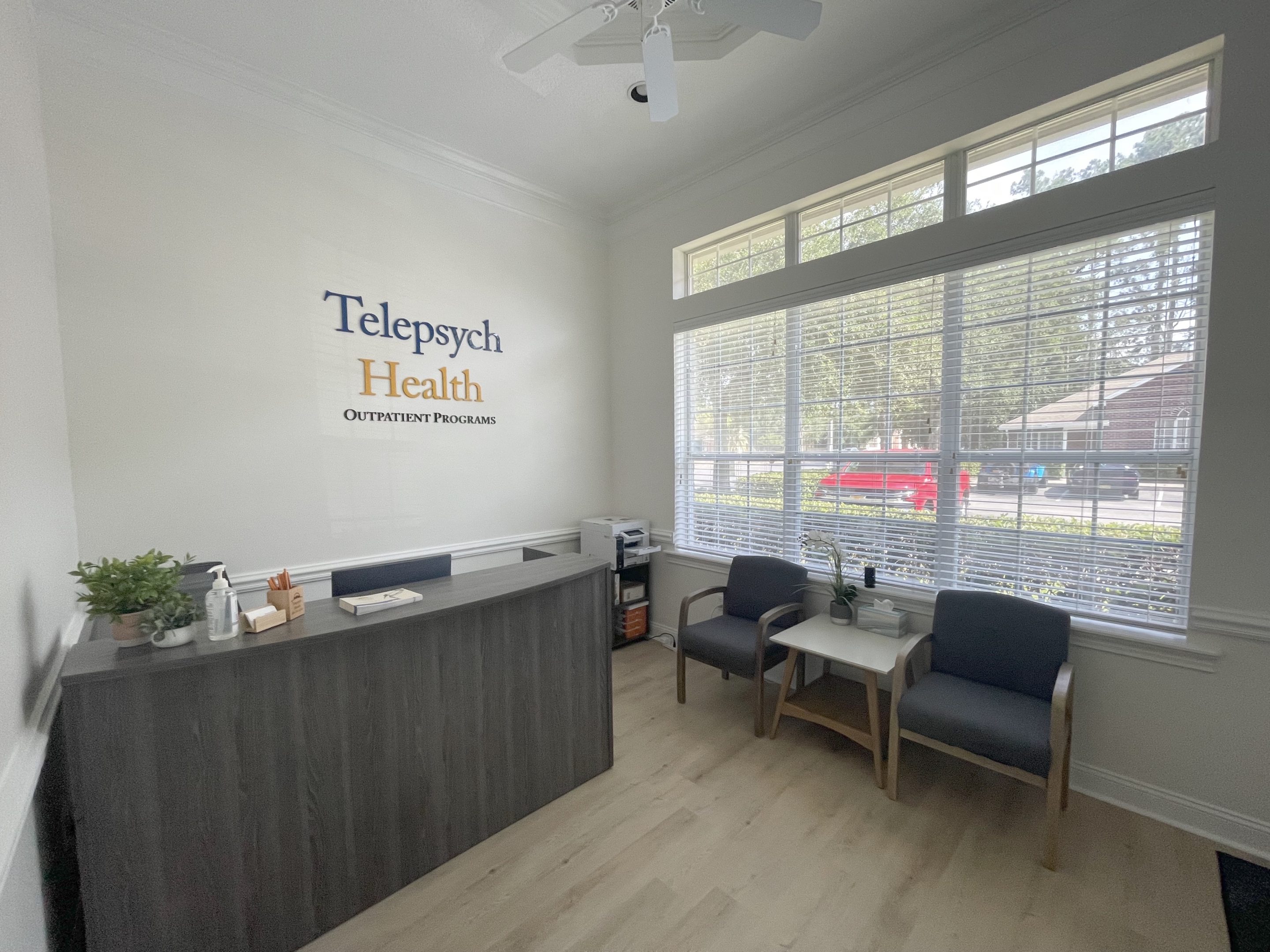This webinar describes the definition of telehealth, evidence-based benefits, features when deciding what technology to use, bandwidth guidelines, HIPAA, standard of care for telepsychiatry, prescribing considerations, billing considerations, appropriateness for telepsych visits, communications skills, troubleshooting common technical issues, developing a patient safety plan and diagnostic limitations of telepsychiatry.
LEARNING OBJECTIVES
By the end of this presentation, you should understand…
• Generally accepted definition of telehealth, according to Centers for Medicaid and Medicare
• Differences between traditional telemental health vs online telemental health.
• Evidence-based benefits of telemedicine
• Key features when deciding what technology to use
• Guidelines for video bandwidth and resolution
• HIPAA privacy and encryption standards
• Standard of care for telepsychiatry compared to in-person visits
• Prescribing considerations
• Billing considerations
• Appropriateness of patients for telepsych visits
• Communication skills requiring emphasis during telepsych visits
• Troubleshooting common technical issues
• Patient safety and how to develop an emergency action protocol
• Diagnostic limitations and shortcomings of telepsychiatry
CMS Definition:
Two-way, real-time (sometimes referred to as “synchronous”) interactive communication between the patient and the physician or practitioner at the distant site. This electronic
communication means the use of interactive telecommunications equipment that includes, at a minimum, audio and video equipment.
American Telemedicine Association (ATA) minimum standards include:
1. a minimum internet connection bandwidth of 384 kilobits per second.
• realistically greater than 10 mb/sec download and upload speeds are best.
2. a minimum live video display resolution of 640 x 360 pixels at 30 frames per second (somewhat outdated, as vast majority of cameras
for the last decade would fit this).
• Macbooks produced 2011 and later have 1280×720 (720p)
• There’s more to image quality than just resolution! sensor that captures light (reduces noise), light itself, image processing (color
quality), and internet speed (since low speed can cause it to adjust to low resolution)
3. videoconference equipment conforms with applicable federal and state regulations.
Advantages of Telepsychiatry
• Studies show patient satisfaction is consistently high
• Patients in fact can have excellent privacy, if all guidelines are followed
• They won’t be seen entering and leaving a psychiatric office.
• Less time commuting, means less time off from work; they won’t have to explain their departures.
• Can more easily collaborate with other providers or family members, as they can join the session.
• Collaborative care model
• Some groups of patients may prefer video visits:
• Children—they are very accustomed to interaction on a screen, find it natural
• Anxious—some may have significant distress getting out of the home, checking into an office setting and adapting to the office
• Paranoid—extremely paranoid individuals would have great difficulty leaving the home and being in public
• Geographically distant—improves access to care, saves cost in travel time.
• Older adults may be hesitant to embrace the technology, but can definitely learn how to use it, and it may help with mobility
and hearing difficulties (connect directly to hearing device).
• Telepsych encourages provider retention and addresses recruitment difficulties in certain areas.
Studies Show Benefit
Evidence shows that telepsychiatry compared to in-person visits results in…
• Equal outcomes and satisfaction (studies are on next slide)
• Reduced hospitalization and comparable cognitive improvement in elderly (Lyketsos et al. 2001, Poon et al. 2005)
• Similar improvement in function scores at 6 months in individuals with depression or schizoaffective disorder (Moreno, 2012)
• Effective therapy for PTSD (Hilty, 2013)
• Improved collaborative care (Fortney, 2013)
• Majority of patients actually favor doctor-patient interactions via telemedicine, in a review of 38 studies, which was then replicated in over
50 further studies specifically in the domain of telepsychiatry (Chakrabarti, 2015)
• Studies have found that after controlling for other barriers (e.g., reimbursement and regulatory issues) negative attitudes of clinicians and institutions are the most significant barriers affecting use of telepsychiatric services (Hailey, 2008)
Internet Speed
• Run a speed test on your computer, make sure you get at least 10 mb/s download and upload speeds.
If you don’t reach that recommended speed, you can either
• Call your internet provider to increase the speed
• Use a wired ethernet connection to your router (if you don’t have an ethernet port on your computer, buy a thunderbolt-to-ethernet
converter, or a USB-to-ethernet converter)
• If using wifi, the 5g network is faster (the range is poorer though, so get as close as possible to the router). No matter which
network, 2g or 5g, getting closer helps. Make sure you don’t have other apps downloading or syncing in the background.
• Some video technologies compress the video feed better and can offer better video quality with the same bandwidth.
I encourage patients to use a desktop/laptop, and not a phone, for improved wifi speed and better visibility of the patient.
Insurance Requirements
What health insurance companies require:
• Protocols for informed consent, emergency contact information
• Protocol for technical failure
• Malpractice insurance carrier has been notified
• Room should be reasonably soundproof and have adequate lighting
• You will only provide services according to state requirements and have a license where the member is physically located at the time of services.
HIPAA Requirements
• Technological Considerations
• Any data that is stored or transferred must be encrypted: video, audio, email.
• Video conferencing software includes encryption. Industry
standard is AES 256-bit encryption which exceeds HIPAA requirement (128 bit). There are different types of encryption: FIPS, ISDN, AES, VPN
• Do they store data?
• Is the data transmitted directly peer-to-peer?
• They must offer a BAA: contract between two parties, to uphold their responsibilities of protecting the data that they say they will protect. This satisfies HIPAA regulations
and creates liability between the parties.
Risk Assessments
Do internal risk assessments. Mine is based on the HHS.gov Security Rule Guidance Material: https://www.hhs.gov/hipaa/forprofessionals/
security/guidance/index.html
• Covers administrative safeguards (who has access, where does PHI enter and exit, passwords, termination protocols),
physical safeguards, technical safeguards, organization policies and procedures.
• Risk assessment consists of a (approx. 40 page) document of questions that systematically cover above topics and ask whether or not that feature is being implemented, if so,
why not, and an action plan.
Standard of Care
Must follow the same standard of care as an in-person visit. It is your responsibility to meet the standard of care, and you cannot
blame shortcomings of the technology as your defense.
• All state and federal laws of in-person visits apply.
• You must be licensed and follow laws in the jurisdiction where the patient is physically present during the appointment.
• If patient is traveling out of state, and you are not licensed in that state, you need to contact the professional board in that state
to see if temporary treatment is allowed.
• May not apply to VA settings.
• Laws may change, be nonspecific, or in conflict with other laws. Always check with malpractice provider case-by-case.
• Verify the patient’s identity – have them send a photo of their identification card.
• Use an informed consent consisting of clinic policies and procedures, to address all the specifics of appointments, scheduling, technology, billing, privacy, and contact between sessions.
Ryan Haight Act of 2008
All states must follow Ryan Haight laws regarding prescribing of controlled substances, requiring an in-person visit first.
Alternative options:
• Consider reasonable alternatives that are not controlled substances.
• Allowable when the patient is being treated by, and physically located in, a DEA registered hospital or clinic
• Allowable when the patient is in the physical presence of a DEA registered practitioner.
• Write the patient a letter of support of a medication, explain the reason for its use, and what treatment monitoring that you will continue to provide. Patient can bring this to their
primary care provider. Psychiatrist is a consultant to the PCP.
• Allowed with Indian Health Services or VA patients.
Building Patient Rapport
Overcoming the sense of depersonalization with the use of
technology… but use the setting to your advantage
• Use the visit as a snapshot into home life
• With televisits, you can gain insight into a person by their environment
• Are other people in home incorporated into the visit or viewed as an unwelcome interruption?
• Ask to be introduced to off-screen parties in the background.
Alternatively, ask if the patient wants additional privacy.
• Does the visit feel like they are trapped and enclosed or open?
• Do they get uncomfortable when others are around?
• Are they easily startled?
• Dog or pet in the background?
• Use the environment as a clue for evaluation, and for
conversation.
Before you begin
• Practice sessions to understand the user’s experience.
• Understand how perceptions of technology change depending on age and culture
• Most technical issues happen in the first session and are user related, usually not due to the technology itself
• Therefore provide written and verbal instructions to patients before the first session.
• Convey the importance of a private area for them to feel most comfortable speaking.
• Explain to the patient the importance of being able to see
patient’s full face and most of their torso.
• State the billing policy when there is a technical issue (in a policies and procedures consent).
• We can reschedule the remaining appointment time for another time if the patient requests. If so, the billing can be done on the rescheduled date.
• Have a plan B technology to use.
After you have started
• If bandwidth is slow, lag will occur. Can be frustrating!
• Switch to telephone and mute the computer.
• See if you can change the resolution of the video to lower definition. Most adjust automatically.
• Echos may occur if 2 mics are active
• Computers usually only allow one active mic but sometimes 2 can be active.
• You can go into settings and choose which microphone you want active.
• Lower the speaker volume.
• Use a headseat.
Patient Safety
• You must know your jurisdictional laws regarding involuntary hospitalization.
• In non-traditional telemedicine, where there is no clinical staff available, it should be well-known up front that you will need to know where they are during each and every visit.
• My follow-up appointment questionnaire asks them to enter the address where they’ll be during the session, which I compare to their identification card they have provided. You’ll recognize the background of their home. If they aren’t home, ask the address of where they are.
• Also have an updated cell phone number for the patient.
• Having already established a therapeutic alliance and discussed a safety plan, patient will be more cooperative.
• https://suicidepreventionlifeline.org/wpcontent/uploads/2016/08/Brown_StanleySafetyPlanTemplate.pdf
In an emergency
• Consider what resources are or aren’t available in small communities.
• Know limitations to transportation in the patient’s neighborhood, and potential delays in response times.
• Identify local emergency resources and phone numbers: police/sheriff, psychiatric hospitals. Have these phone
numbers readily available prior to each session.
• Ask the emergency contact, or patient support person (PSP), to go to the patient (unless the patient has a firearm
available), as emergency response times can vary.
• Unless you’re in the same vicinity as the patient, call police or sheriff directly, not 911.
• Ask the PSP to call 911 and stay in contact with the patient via phone or video throughout the crisis, until the emergency assistance arrives.
• Be familiar with nearest hospital emergency room or other local in-person mental health resources should a referral be necessary for additional services.
• Coordinate care with distant site clinic.
• Managing emergencies via telehealth is similar to clinic-based setting
• Can place and rescind baker acts
• Inquire about and address access to firearms

 Bruce Bassi
Bruce Bassi





